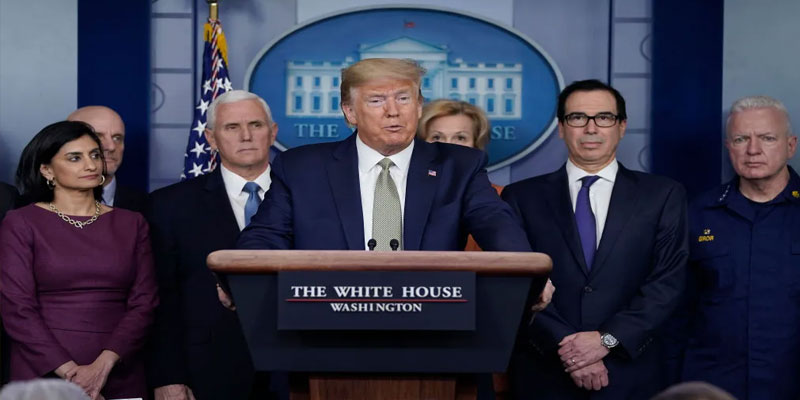Crisis at the Clinic: Measles Outbreak Collides with Funding Cuts
As a deadly measles outbreak sweeps across Texas and New Mexico, paediatrician Dr. Ali Sherif is seeing a 25% spike in demand for vaccines at his modest clinic in Hobbs, New Mexico. Parents are rushing in—concerned, afraid, desperate to protect their children from a virus that has already claimed three lives and sickened over 600.
But while the disease spreads, the lifeline program that ensures these life-saving vaccines reach low-income families is itself under siege. The Vaccines for Children (VFC) program, a federally funded initiative that supplies nearly half of all childhood vaccines in the U.S., faces an uncertain future due to sweeping budget cuts initiated under President Donald Trump’s new federal cost-cutting agenda.
An Old Program Under New Pressure
The VFC program was born in 1993 after a devastating measles epidemic in the U.S. It buys vaccines in bulk—like the measles-mumps-rubella (MMR) shot—and distributes them through state health departments to clinics like Dr. Sherif’s. The result: no cost to families, regardless of insurance status.
But the program’s infrastructure relies on federal support from the Centers for Disease Control and Prevention (CDC). And under recent Trump administration policies, 10,000 staff have been laid off from the Department of Health and Human Services (HHS), with another 10,000 reportedly leaving voluntarily. While the core of the vaccine program was left intact, the community outreach units—crucial for driving awareness and uptake—were not so fortunate. About 20 outreach staff were cut, weakening the government’s ability to reach the most vulnerable populations during an ongoing health emergency.
Even more alarming, $11 billion in COVID-era grants to state and local health departments—used for vaccine clinics, education, and immunization drives—has been canceled. Though a federal judge has temporarily blocked the move in some states, others are already feeling the crunch.
A Measles Resurgence—and a Moral Crossroads
The numbers tell a chilling story. Texas has logged 624 measles cases so far, with 64 hospitalized. An eight-year-old girl with no underlying health conditions died earlier this month. New Mexico has seen 65 infections and one adult fatality.
Health officials say the outbreak is fueled by gaps in vaccination coverage, and they’re worried the pullback in federal support may make matters worse. Dr. David Sugerman, who is leading the CDC’s measles response, told an advisory panel last week, “We are scraping to find the resources and personnel needed to support Texas and other jurisdictions.”
In low-income regions, this support is not optional—it’s critical. In New Mexico, which ranks among the states with the highest rates of childhood poverty, doctors like Dr. Alex Cvijanovich are sounding the alarm. “There are really bad, scary things we can protect our children from,” she said, recalling a teenage patient who died from a long-term neurological illness caused by a measles infection he contracted as an infant.
Trump’s Policy Vision: Reform or Retreat?
The recent funding cuts are part of President Trump’s broader mission to reduce federal government spending and shift public health responsibility to states. In this vision, public health is no longer a centralized pillar but a patchwork quilt managed by local officials—some better funded than others, some politically opposed to vaccination mandates altogether.
Trump’s newly appointed Health Secretary Robert F. Kennedy Jr., a long-time vaccine skeptic, has only fueled concerns. His mixed messages on vaccine safety and promotion of unproven treatments have alarmed public health experts, particularly during this outbreak. His stance, critics argue, has undermined confidence in vaccines at the worst possible time.
Doctors Caught in the Middle
Dr. Sherif’s clinic is a perfect example of what’s at stake. Eighty-five percent of his patients are on Medicaid, and without federal support, his $50,000 monthly vaccine order would be out of reach. “If I were to buy them by myself, I would not get enough for my patients,” he said.
The same holds true for pediatric clinics in Albuquerque, where vaccine orders through the VFC program often top $100,000 monthly. Clinic manager Shawna Maestas said, “If families had to pay for it, they would push it off.”
That’s how outbreaks begin—not from bad luck, but from avoidable delays, unreachable families, and defunded systems.
Vaccination or Vulnerability—The Choice Is Ours
As the measles outbreak worsens, the deeper question becomes clear: Can a nation afford to gamble with the health of its children?
The Trump administration’s cuts have sparked debate—about fiscal discipline, public health responsibility, and the role of federal government in protecting its most vulnerable. But the consequences of these decisions are already playing out in emergency rooms and pediatric clinics across the country.
This is no longer just a funding issue—it’s a moral dilemma. In the wealthiest country on Earth, should a child’s survival depend on whether their parents can afford a vaccine?
The answer, for now, lies in Washington. But the consequences are being felt in Hobbs, Albuquerque, Dallas—and far beyond.
(With inputs from agencies)





